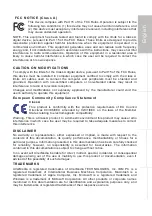
152
Live View
D
Shooting in Live View Mode
Although it will not appear in the final picture, distortion may be
visible in the monitor if the camera is panned horizontally or an object
moves at high speed through frame. Bright light sources may leave
after-images in the monitor when the camera is panned. Bright spots
may also appear. Flicker and banding visible in the monitor under
fluorescent, mercury vapor, or sodium lamps can be reduced using
Flicker reduction
(
0
241), although they may still be visible in the
final photograph at some shutter speeds. When shooting in live view
mode, avoid pointing the camera at the sun or other strong light
sources. Failure to observe this precaution could result in damage to
the camera’s internal circuitry.
Live view ends automatically if the mode dial is rotated to
g
or the
mode dial is rotated from
g
to another setting.
Live view may end automatically to prevent damage to the camera’s
internal circuits; exit live view when the camera is not in use. Note that
the temperature of the camera’s internal circuits may rise and noise
(bright spots, randomly-spaced bright pixels, or fog) may be displayed
in the following instances (the camera may also become noticeably
warm, but this does not indicate a malfunction):
•
The ambient temperature is high
•
The camera has been used for extended periods in live view or to
record movies
•
The camera has been used in continuous release mode for extended
periods
If live view does not start when you attempt to start live view, wait for
the internal circuits to cool and then try again.
D
The Count Down Display
A count down will be displayed 30 s before live view ends automatically
(
0
148; the timer turns red 5 s before the auto off timer expires (
0
245)
or if live view is about to end to protect the internal circuits). Depending
on shooting conditions, the timer may appear immediately when live
view is selected.
















































